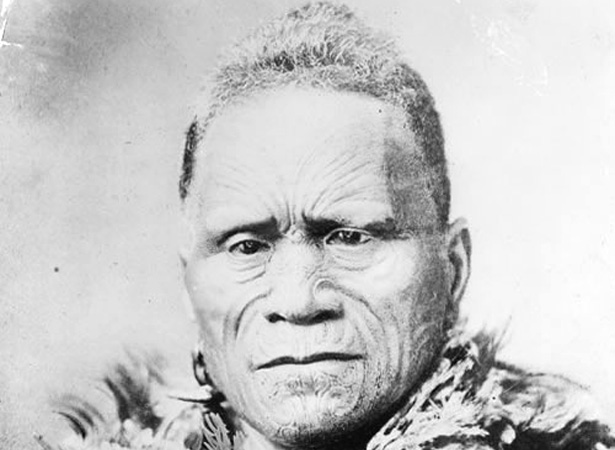
Tūkāroto Matutaera Pōtatau Te Wherowhero Tāwhiao had led his people through the traumatic period during and after the wars of the 1860s.
He was buried at Taupiri in September after a tangihanga attended by thousands. Tāwhiao was succeeded as King by his son, Mahuta.
Tāwhiao left a legacy of religious principles from which his people would draw a future dream for Tainui: the rebirth of a self-sufficient economic base, supported by the strength and stability of the people. Native trees and foods symbolised strength and self-reliance in his statement: ‘I shall build my own house, the ridge-pole will be of hīnau and the supporting posts of māhoe and patatē. Those who inhabit that house shall be raised on rengarenga and nurtured on kawariki.’
During Tāwhiao’s exile in the ‘King Country’, Waikato people had reflected and focused on the powerful symbols of the King movement. The man and the vision became united and formed part of the traditions and knowledge of the people. The vision is recounted and passed on at tribal hui, where it continues to be discussed and debated.
Read more on NZHistory
The death of Tāwhiao – Māori King movement - 1860-94Tūkāroto Pōtatau Matutaera Tāwhiao
External links
How to cite this page
'Death of second Māori King', URL: https://nzhistory.govt.nz/death-of-a-king-tukaroto-matutaera-potatau-te-wherowhero-tawhiao, (Ministry for Culture and Heritage), updated 27-Jul-2017
